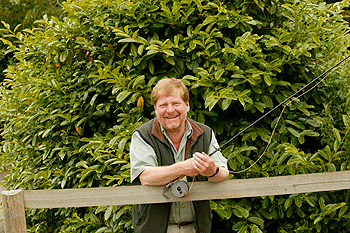Gamekeeper: Lead shot and the law

So there I was, having a wonderful day outdoors with my host and four of his other mates, when a dilemma flew my way. As the beaters converged on the little wood, a pair of quackers flushed from the marl pit hidden inside and headed towards me, but I was loaded with lead. There was just time to break the gun, empty the top barrel, replace with a Bismuth cartridge and shoot, taking care to pick the drake. He dropped like a stone, and his lady friend flew on unsaluted.
Afterwards, the headkeeper complimented me on my speed of change, and I proudly showed him the spent Bismuth case to prove that it was not all bull. All this, and a couple of nice cocks later in the drive helped to make this a memorable part of a memorable day.
Signing the pledge
Regular Shooting Times readers will be only too aware that lead shot has been in the news again lately. A joint statement on compliance with lead regulations was made by all our representative organisations and now there is an e-pledge to sign. Many will have also seen the recent BBC Countryfile programme, with its two-part feature on lead and waterfowl, which repeated the point that birds are still picking up lead pellets when they should not.
Some people may not think this matters, but I assure them that it does. Some species of wildfowl are particularly prone to picking up spent shot, and when this is ground up in their gizzards it is bad for them. Many die in a slow and unpleasant way, while those that survive are more likely to be predated. This, of course, has potential poisoning implications for the predators as well as the wildfowl.
So, where is the lead coming from? The use of lead shot for wildfowl has been illegal in England since 1999, with Wales following soon after. There are also severe restrictions on where you can use lead to avoid deposition on most Site of Special Scientific Interest (SSSI) wetland areas. In Scotland it is illegal to use lead shot in wetlands, whatever you are shooting.
Many have suggested that the shot picked up by today?s wildfowl is mostly historical, but research into the availability of spent lead in wetland soils shows that most of it soon becomes unavailable to duck. However, it is also fair to say that the legislation as it stands never could entirely prevent the odd duck from picking up a lead pellet. That said, there should have been a much greater reduction in incidence by now, and the obvious cause is that some shooters are not abiding by the regulations as well as they should.
Signing a pledge that says you support obeying the law may seem trite, but there is another point here. A well-supported pledge will help to pressure the non-compliers into following the rules too, as well as showing that we who shoot do care about this issue. In this respect, I thought it was helpful that the Wildfowl and Wetlands Trust spokesman on Countryfile welcomed the pledge. He said that if compliance with the current regulations was up to standard he saw no need for a total ban on lead shot (News, 17 July). So, please, I urge you to sign up if you have not already done so by visiting http://leadshotcampaign.org.uk.
Doing more
So, what more can we do to help prevent wildfowl from finding and ingesting lead pellets? Following the letter of the law is a move in the right direction, but I think we can go a little further. On another favourite shoot where I am lucky to be invited occasionally, part of the day is spent stirring up the snipe and duck, plus the odd wild pheasant, on an area which includes some water meadows. The meadows are part of the Avon Valley SSSI, where it is illegal to use lead. The rule here is simple: the shoot captain says, ?No lead from now on, chaps,? even when we are after pheasants on the drier ground. If you think this is excessive, think about this ? shot can travel several hundred metres. The little pheasant drives are closer than that to the water meadows, where the teal and mallard feed.
Frankly, I wish more shoot captains would take this sort of precautionary approach. The Code of Good Shooting Practice states: ?Guns should avoid depositing lead shot in wetlands important to feeding waterfowl.? If we all followed this rule, there would be far less scope for criticism just now.
Thinking back to that wood with the pond that I began this column with, if I had been better briefed and therefore loaded with Bismuth from the start, I might have pulled off a spectacular right and left at those mallard, as well as avoiding the risk of dropping lead pellets in that little pond.








